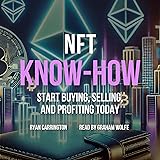Navigating the volatile world of cryptocurrency can feel like a labyrinth, especially when the promise of “life-changing money” often clashes with the harsh reality of significant losses. Indeed, one seasoned crypto investor, after six years in the trenches, shared insights into making millions while also recounting the painful experience of losing everything multiple times. Their journey, marked by extensive experience as a crypto angel investor in over 100 startups, culminated in 21 critical lessons designed to help both new and experienced participants make more money and lose less in the dynamic crypto market. This comprehensive guide, inspired by years of practical crypto trading and investing knowledge, distills essential strategies for success.
Beyond the Four-Year Cycle: Understanding Crypto Market Dynamics
Many newcomers to crypto investing fall prey to a common misconception: the idea of rigid, predictable four-year cycles. This belief often leads beginners to attempt timing Bitcoin’s exact bottom and top based on halving events. However, this strategy can prove disastrous. The reality is that while crypto markets are cyclical, the exact four-year pattern following Bitcoin halvings is largely coincidental. The true drivers of significant market movements are macro liquidity cycles. These broader economic forces, such as global M2 liquidity and the Federal Reserve’s balance sheet adjustments, exert a far greater influence on market trends than any pre-determined timeline. Understanding these real economic indicators allows investors to make more informed decisions.
The Golden Rule: The Trend Is Your Friend
A fundamental principle in successful crypto trading is aligning with the prevailing market trend. It’s a common refrain to “buy the dip,” but this advice only holds true within an established uptrending market structure. Blindly buying dips in a consistent downtrend can lead to continuous losses as each dip sinks lower than the last. Conversely, in a downtrend, the smart play is often to “sell the rips”—selling when prices bounce momentarily before continuing their decline. Sideways or “choppy” markets present another challenge; in these periods, the best strategy is often to avoid trading altogether. Recognizing whether the market is in an uptrend, downtrend, or sideways movement is paramount to applying the correct trading strategy and preserving capital.
Mastering Your Market Psychology
The emotional roller coaster of crypto markets can be particularly draining, especially during extended periods of sideways movement. For example, when Bitcoin trades within a relatively narrow range for months, like the 55k to 70k range observed from March to October 2024, many traders lose confidence and over-trade. This leads to unnecessary losses and can cause investors to sell off strong long-term altcoin holdings at the worst possible time. Experienced traders understand that doing nothing is often the most profitable action in directionless markets. Protecting your psychology, having a clear plan, and resisting the urge to constantly outperform the market during choppy periods are vital for long-term success.
Smart Altcoin Strategies: Valuation, Selection, and Timing
Focusing solely on an altcoin’s dollar price can be misleading. A more comprehensive approach involves evaluating an altcoin’s performance against Bitcoin. For instance, while Ethereum might have increased in dollar value over a two-year period, its ratio against Bitcoin could have decreased, indicating that holding Bitcoin would have been a lower-risk, higher-reward strategy. Conversely, an altcoin like Solana, showing an increasing ratio against Bitcoin, suggests it outperformed Bitcoin and justified its higher risk. This crucial comparison helps investors gauge true portfolio performance and opportunity cost. Platforms like CoinGecko offer a convenient feature to denominate all prices in Bitcoin, providing this full picture at a glance.
Decoding Tokenomics: Market Cap and Supply Dynamics
Effective altcoin selection hinges on a solid understanding of tokenomics, particularly market capitalization and fully diluted valuation (FDV). Many beginners mistakenly assess a token’s “cheapness” based solely on its unit price, ignoring its total supply. Dogecoin, for example, despite its low unit price in 2021, already boasted a multi-billion dollar market cap due to its massive supply of 150 billion tokens, making exponential growth to $1 highly improbable. Market cap and FDV are the real metrics that indicate a crypto token’s true valuation. High FDV relative to market cap, often seen in “VC coins” with less than 10% circulating supply, signals significant future sell pressure from unlocked investor tokens. A circulating supply of 25% or more of the total supply is generally considered a healthier indicator of tokenomics, suggesting less imminent sell pressure from early investors.
Identifying Quality Projects Through Exchange Listings
One of the strongest indicators of a project’s fundamental quality is its listing on major exchanges such as Binance, Coinbase, Upbit, or OKX. These exchanges conduct rigorous due diligence, meaning projects listed there are typically of the highest caliber and less likely to be scams. However, the strategy isn’t to buy new listings immediately, as these often launch at high valuations and experience a downturn. Instead, savvy investors use coin tracking apps like CoinMarketCap or CoinGecko to identify promising altcoins that are currently under the radar or appear “bottomed out,” but are *already* listed on these tier-one exchanges. This indicates a quality project awaiting its marketing push, offering a potential entry point before wider retail attention.
Betting on Market Leaders and Dominant Narratives
Diversifying across too many altcoins, especially within the same category, often dilutes gains. The market tends to consolidate liquidity into one, two, or perhaps three top performers within any given niche. This is evident in categories like Real World Assets (RWA), gaming, or Layer 1s, where a select few like Mantra, Ondo, or Superverse significantly outperform their peers. Furthermore, successful crypto investing is less about picking the single best project and more about identifying strong altcoin categories with compelling narratives. Historical “waves” – DeFi in 2020, Gaming/GameFi in 2021, Layer 1s in late 2021, and AI in late 2023 – demonstrate that picking almost any coin within a dominant narrative during its peak often yields substantial returns. Utilizing tools like TradingView’s crypto screener to filter for top-performing categories over several months helps identify these emerging narratives.
Essential Tools and Practical Implementation
For any serious crypto investor, understanding the basics of TradingView and technical analysis (TA) is indispensable. While many beginners find its interface overwhelming, basic TA doesn’t require complex chart patterns. Simply identifying clear support and resistance levels on long-term charts is incredibly useful. For example, recognizing that Solana consistently bounced from the $12-$13 range during its 2022-2023 consolidation, or that it frequently finds support around the $125 level in the current market, provides valuable insights into potential entry and exit points. These basic chart patterns apply across all exchanges and coins, offering a foundational understanding of price action without needing to predict multi-year future movements.
Leveraging Coin Tracking Apps
For those new to crypto, finding where to buy specific altcoins can be a significant hurdle, as not all coins are listed on major exchanges like Coinbase or Binance. Coin tracking apps such as CoinMarketCap and CoinGecko are powerful tools for this. By searching for a specific coin and navigating to its “Markets” tab, users can instantly see all the exchanges where it’s traded, including smaller, often earlier-stage platforms like KuCoin, MEXC, or Uniswap. These platforms are crucial for accessing low-cap altcoins with higher growth potential before they hit mainstream exchanges. Additionally, these apps excel at categorizing altcoins, allowing users to discover similar projects within a narrative (e.g., all top AI coins) for further research, fostering broader market discovery.
Embracing Multiple Exchanges and Decentralized Platforms
Limiting oneself to only one or two major exchanges, while convenient, severely restricts access to promising, lower-market-cap altcoins that often have the highest growth potential. Top-tier exchanges, due to stringent due diligence requirements, typically list projects only after they’ve achieved significant valuation. Therefore, being prepared to use multiple centralized exchanges, including those with broader altcoin selections like MEXC (listing over 2,500 coins compared to Binance’s 428), is a strategic advantage. Beyond centralized exchanges, decentralized exchanges (DEXs) are equally vital. DEXs like Uniswap, with their intuitive swapping feature, allow immediate trading of newly created tokens, offering the earliest possible access. While this comes with higher risk due to the ease of listing, DEXs are indispensable for exploring emerging projects, including gaming altcoins like Xborg or popular memecoins like Mog Coin, before they gain centralized listings.
Advanced Insights and Protecting Your Gains
In the fast-paced crypto market, information asymmetry can be a significant edge. Rather than waiting for news to break and prices to spike, savvy investors actively seek out early catalysts. This involves looking beyond mainstream news sources into project Discord servers, Telegram groups, and official documentation (docs). Often, early announcements about product releases, partnerships, or major events can be found in these less obvious channels. For example, a swing trade on WorldCoin successfully capitalized on the confluence of the AI hype wave, the announcement of OpenAI’s massive fundraise, and the pre-planned, subtle disclosure of WorldChain’s October announcement. By piecing together this information ahead of wider retail propagation, investors can position themselves for profitable trades before the market reacts fully.
The Allure of the New: Project Longevity
Historical data in crypto reveals a consistent pattern: newer projects often outperform older, “legacy” projects within the same category. For instance, in the “Ethereum killer” narrative, Neo, Stellar, EOS, and IOTA from 2018 have largely faded, replaced by Polkadot in 2021, and now Solana and Avalanche in 2024. This phenomenon stems from several factors. Newer projects typically leverage more advanced technology, which is difficult for older blockchains to integrate without complete rewrites. Additionally, founders of newer projects often still have substantial token allocations yet to unlock, incentivizing them to actively build and promote their projects to drive token price. In contrast, founders of older projects with fully diluted supplies may lack the same vested interest to continue pushing growth. Therefore, betting on innovative, newer projects within established categories tends to yield better returns.
The Bedrock of Your Portfolio: Large-Cap Holdings
Regardless of your altcoin strategy, maintaining a significant portion of your portfolio (at least 50%) in large-cap cryptocurrencies like Bitcoin, Ethereum, and Solana is a prudent strategy. This allocation serves multiple purposes: it provides a stable foundation, helps curb FOMO during market pumps (as these assets typically lead the charge), and acts as a buffer against the extreme volatility of smaller altcoins. Bitcoin, for example, delivered over 4x gains from its 2022 low of 16,000 to 66,000, illustrating the significant returns possible even from established assets. Denominating your portfolio value in Bitcoin can offer a clearer picture of whether your altcoin picks are truly outperforming the market’s benchmark. Furthermore, holding these high-conviction assets provides psychological stability, enabling investors to weather choppy periods and maintain a long-term perspective without panic selling.
The Often-Forgotten Reality: Crypto Taxes
A critical, yet frequently overlooked, aspect of crypto investing is taxes. Many investors mistakenly believe that staying “on-chain” or using decentralized exchanges grants anonymity and freedom from tax obligations. However, regulations are evolving globally, and not only are cash-outs into fiat currency taxable, but crypto-to-crypto trades, even on decentralized platforms, are increasingly considered taxable events. The danger lies in realizing substantial gains during a bull market, spending those profits, and then being hit with a hefty tax bill in the subsequent bear market, forcing a sale of remaining assets at a loss. It is crucial to consult a tax professional and proactively plan for tax liabilities, setting aside funds during profitable periods to avoid unpleasant surprises and financial strain in leaner times. The intricacies of crypto trading and investing extend far beyond simply buying and selling; understanding and preparing for tax obligations is a non-negotiable part of safeguarding your hard-earned gains.







